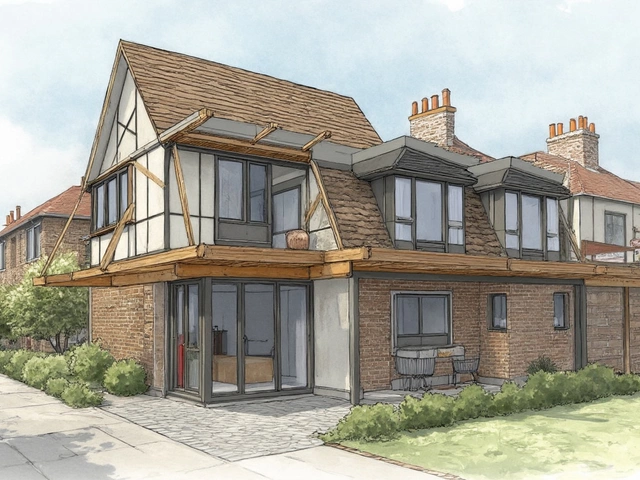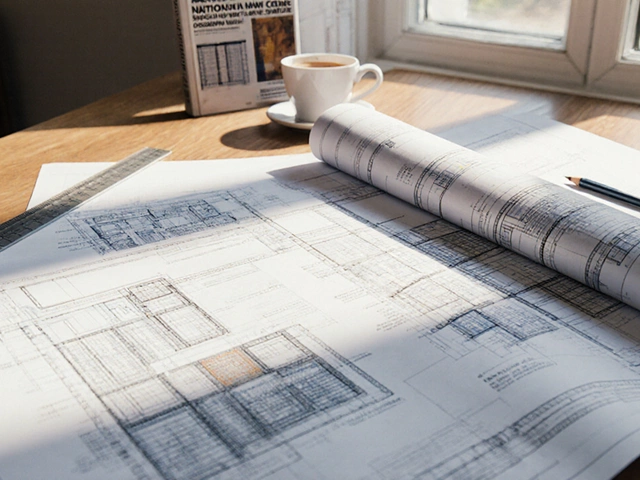Extension Costs: Your Quick Guide to Budgeting a Home Add‑On
Thinking about adding a bedroom, a bigger kitchen, or a home office? The first question most of us ask is, "How much will this cost?" Extension costs can feel like a mystery, but they break down into a few clear parts. Knowing those parts helps you avoid surprise bills and keeps the project moving.
Key Cost Drivers for a Home Extension
The biggest price tag usually comes from the size and design. A 100‑square‑foot room will cost less than a 300‑square‑foot loft, and a complex roofline or multiple story adds extra labour. Next up is the foundation. If your soil is soft or the existing footing needs reinforcement, you could be looking at a few thousand pounds for excavation, concrete, and waterproofing – similar to the costs mentioned in our "Can a Foundation Be Unfixable?" guide.
Materials make a huge difference too. Brick and block are cheaper than high‑end stone, but if you want a premium look you’ll pay more. Don’t forget windows, doors, and insulation – they’re not just aesthetic, they affect energy efficiency and future heating bills. Plumbing and electrical work can add another layer of cost, especially if you’re extending a bathroom or kitchen. Our "Dry Fit Kitchen" article shows how proper planning at this stage saves money later.
Labour rates vary by region and season. Hiring a reputable builder during peak construction months may cost more, while off‑season work often comes with a discount. Finally, factor in planning permission and any required surveys. A simple extension might slip through with minimal paperwork, but larger projects need drawings, structural engineer sign‑off, and sometimes a full building regulation submission.
Smart Ways to Save on Extension Expenses
Start by getting at least three quotes. Compare not just the total price, but what’s included – some contractors bundle site cleanup, waste removal, and insurance, while others charge extra. Look for a contractor who offers a clear breakdown; hidden fees are a common pitfall.
Consider reusing material from the existing house. If you’re stripping old flooring or removing internal walls, that timber or brick can be repurposed, cutting material costs. Our "Cheapest Ways to Roof a House" guide explains how choosing a cost‑effective roofing material can shave thousands off the final bill without sacrificing durability.
Plan for a 10‑15% contingency fund. Unexpected issues like a hidden pipe leak or soil instability show up mid‑project, and having cash on hand prevents delays. If you’re handy, you might tackle some of the finish work yourself – painting, tiling, or installing kitchen cabinets can be DIY-friendly, much like the steps outlined in "Can You Fix Your Own House Foundation?"
Lastly, schedule the work during the grey months. Contractors often have lighter workloads in winter, which can translate into lower labour rates and faster turnaround. Just make sure the weather won’t affect the drying time of concrete or plaster.
In short, extension costs are a mix of size, design, foundation work, materials, labour, and paperwork. Break each piece down, get solid quotes, keep a contingency fund, and look for smart savings wherever you can. With a clear picture of the numbers, your home extension can stay on budget and deliver the extra space you’ve been wanting.
Is It Cheaper to Build Up or Expand? Real Costs of Home Extensions

Thinking about making your house bigger? You'll need to decide whether to add space above your current home or spread out by building onto the side. Each option comes with its own price tags, surprises, and challenges. This article digs into the details that make building up or expanding out a different experience. You'll find out which choice might save you money, what's involved behind the scenes, and ways to dodge budget mistakes.
read more



